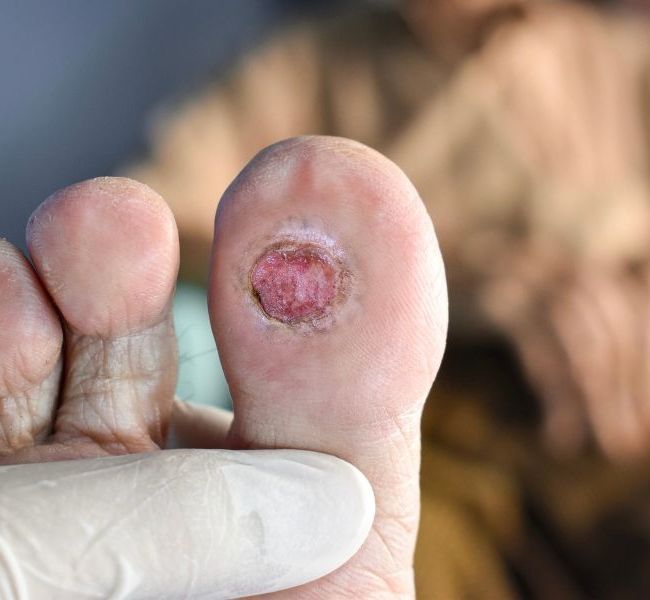Call us now:
Peripheral Interventions in Non Healing Diabetic Foot Ulcer
Multidisciplinary approach restores blood flow, promotes healing in diabetic ulcers

Peripheral Interventions in Non Healing Diabetic Foot Ulcer
Peripheral interventions for non-healing diabetic foot ulcers involve a multidisciplinary approach, including vascular assessment, wound care, and interventional procedures. Vascular studies help identify arterial blockages, guiding treatments like angioplasty or stenting to restore blood flow.
Simultaneously, meticulous wound care, debridement, and offloading measures are essential to promote healing and prevent complications. Regular follow-up assessments ensure treatment efficacy and wound progress monitoring, optimizing outcomes for diabetic patients with peripheral vascular disease and foot ulcers.
Here’s a step-by-step explanation of how Peripheral Interventions in Non Healing Diabetic Foot Ulcer typically works
The patient undergoes a comprehensive assessment by a multidisciplinary team comprising vascular surgeons, podiatrists, wound care specialists, and interventional radiologists.
Vascular studies such as Doppler ultrasound or angiography are performed to evaluate blood flow to the affected foot and identify any arterial blockages or peripheral artery disease (PAD).
The wound is meticulously evaluated for size, depth, infection, and tissue viability to determine the appropriate treatment approach.
Debridement of necrotic tissue and pressure offloading measures, such as specialized footwear or orthotic devices, are implemented to promote wound healing and prevent further tissue damage.
Based on vascular assessment findings, a treatment plan is formulated, which may include angioplasty, stent placement, atherectomy, or bypass surgery to restore blood flow to the affected foot.
In cases of arterial blockages, minimally invasive procedures such as angioplasty with or without stent placement are performed to reopen narrowed or occluded arteries, improving blood flow to the foot.
Concurrent wound care measures, including regular dressing changes, topical treatments, and infection control, are initiated to promote wound healing and prevent complications.
Patients undergo regular follow-up evaluations to monitor the effectiveness of the revascularization procedure, assess wound healing progress, and adjust treatment as needed to optimize outcomes.
Peripheral Interventions in Non Healing Diabetic Foot Ulcer involves various medical specialties
Peripheral interventions for non-healing diabetic foot ulcers involve multiple medical specialties, including vascular surgery, podiatry, wound care, and interventional radiology. Each specialty contributes unique expertise to the comprehensive management of these complex cases.
Leading cardiologist, dedicated to pioneering treatments, enhancing heart health, and transforming lives through compassionate care.
About Us
Contact Info
- +91-8355900307
- raviguptacardiology@gmail.com
- Police Station, 1877, Dr Anandrao Nair Marg, Near Agripada, Mumbai Central, Mumbai, Maharashtra 400011
Copyright @2024. All Right Reserved | Designed By Rebecca Digital.

